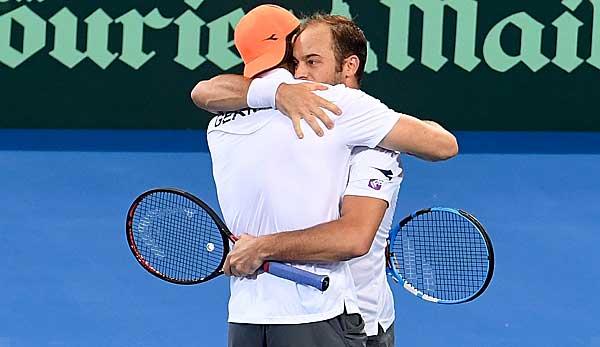Tennis
ATP/WTA: Service: The way to the perfect double
A good double lives on its harmony. Evasive looks, hardly any handshakes, accusations of each other’s mistakes. A working double behaves very differently on the pitch. Here is the first part of our service offer.
But this harmony must always develop first. Before processes only work with short calls or signs, both players have to get to know each other. This does not mean that you get along well outside the court and know each other’s game well. Harmony does not only mean that you get on well with your character but also that you playfully reach a common denominator.
Double is really about empathy and understanding for the character and tennis of the partner. Egoism is the tornado for every double. He confuses the harmony. Many players also act as if they were single players in doubles. In doubles, however, the team is the players. Strengths and weaknesses can now be identified in this team – and no longer on their own.
The basic question that each double has to answer for itself is: Who plays on the forehand and who on the backhand? It is not uncommon that the short path of decision is taken here. This short way leads quickly to the goal, but not always to the right one. The player with the better forehand plays forehand, the player with the better backhand goes to the backhand side. So far, so illogical.
Why is this lineup illogical? If we go through a typical rally in a double, where the player does not move to the net at the baseline after the serve or return and actually stays longer at the baseline, then he has the possibility to position himself further outwards.
If a player plays on the backhand side because he plays a better backhand, he will probably play more forwards than backhand. If you want to be tactically clever, you have to think differently. The short distance is not enough. You have to add some curves, villages and mountains.
If Player A is right-handed and plays a dangerous forehand, especially as a forehand inside-out, then Player A should bet on the backhand. In this position, player A can efficiently bring his strength to your doubles. His whipping forehand can be played as an attacking ball or to attack more through the middle.
The score also plays an important role – more on that in a moment. On the forehand side this strength would not be as effective and you would rob yourself of a great strength. You should get together before the double and be honest with each other. Who can bring what strength to the double? What weaknesses should you consider? Don’t forget that the backhand side is the side where the decisive points are played:
It is therefore recommended that you think carefully about who will play on the backhand side. You could also consider who is the mentally stronger player of you. There are players who play the Big Points better. The first commandment is therefore always honesty.
Going out on the court and “just playing” will not work. It doesn’t matter if you’ve often played doubles or not. A meeting directly before the double about the current state of health is important. You should be able to judge yourself well and communicate this honestly with your partner.
Daily form and current general form should not be underestimated. In addition to your strengths, your weaknesses should also be clearly communicated. If you don’t play a good volley, it’s better to stay on the baseline in the rallies and set the stage for the stronger net player with good basic strokes. The behaviour in the rallies is also part of the double formation.
– Who plays on the backhand…
– Who plays on the forehand…
– Who acts more from the baseline in the rallies…
– Who intervenes at the net in the rallies…
The basis is right. The way to a successful double is paved.













You must be logged in to post a comment Login